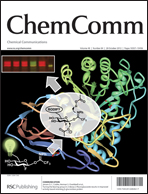Chemical and biological sensors based on metal oxide nanostructures
Abstract
Unique and fascinating features of metal oxide nanostructures (MONs) have attracted considerable attention in recent years because without much effort, the MONs can be grown in many different nanoscale forms, thus allowing various novel devices of chemical and biological sensing to be fabricated. To improve the sensors performance by tailoring the properties of MONs through engineering of morphology, particle size, effective surface area, functionality, adsorption capability and electron-transfer properties have been extensively explored. This feature article collates the various MONs and their potential applications in the chemical and biological sensors for clinical and non-clinical applications.


 Please wait while we load your content...
Please wait while we load your content...